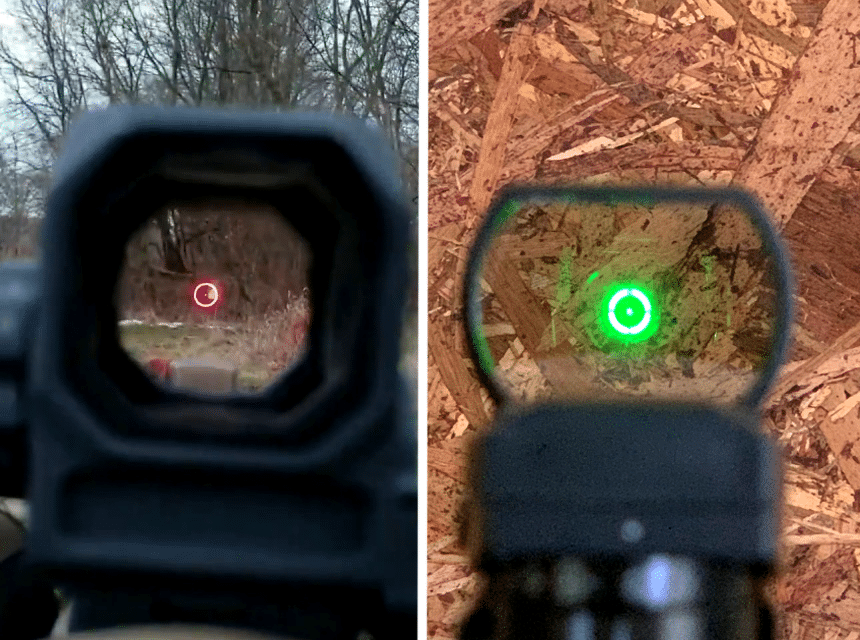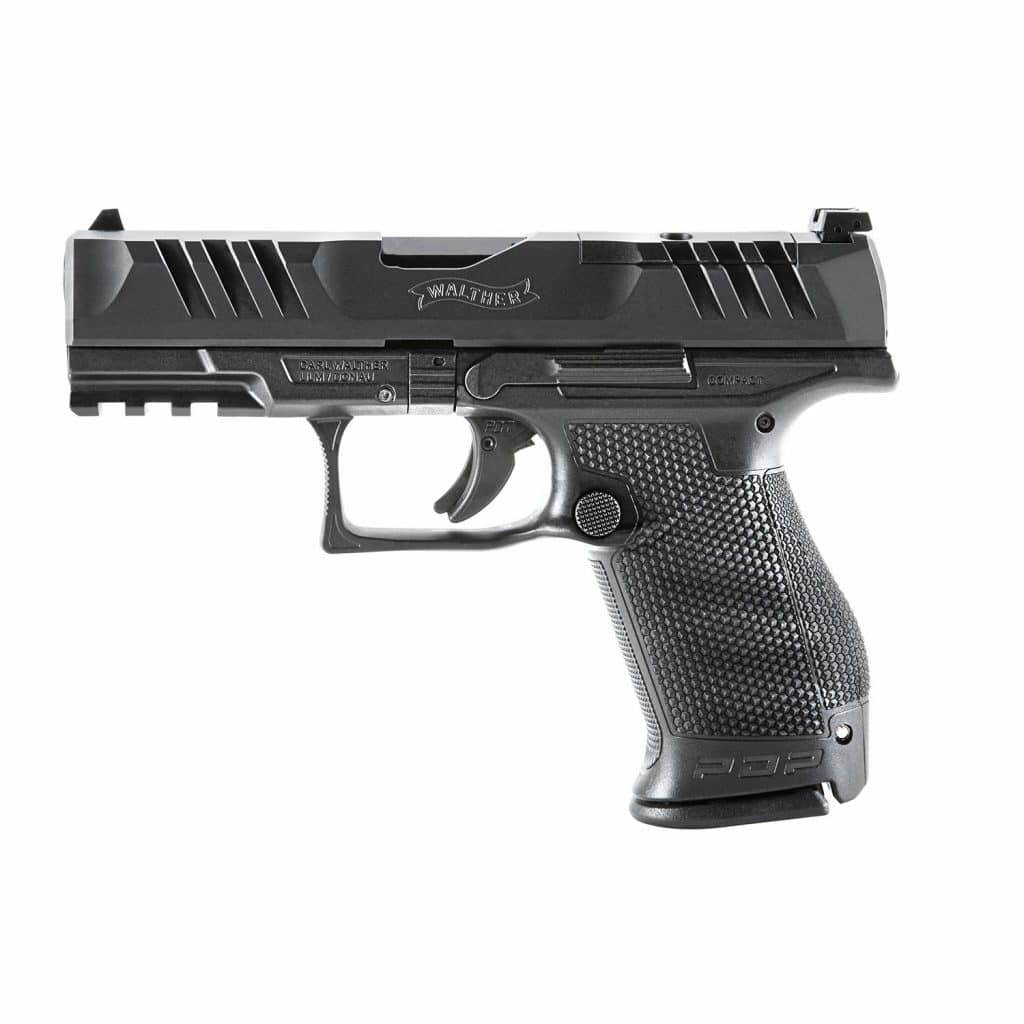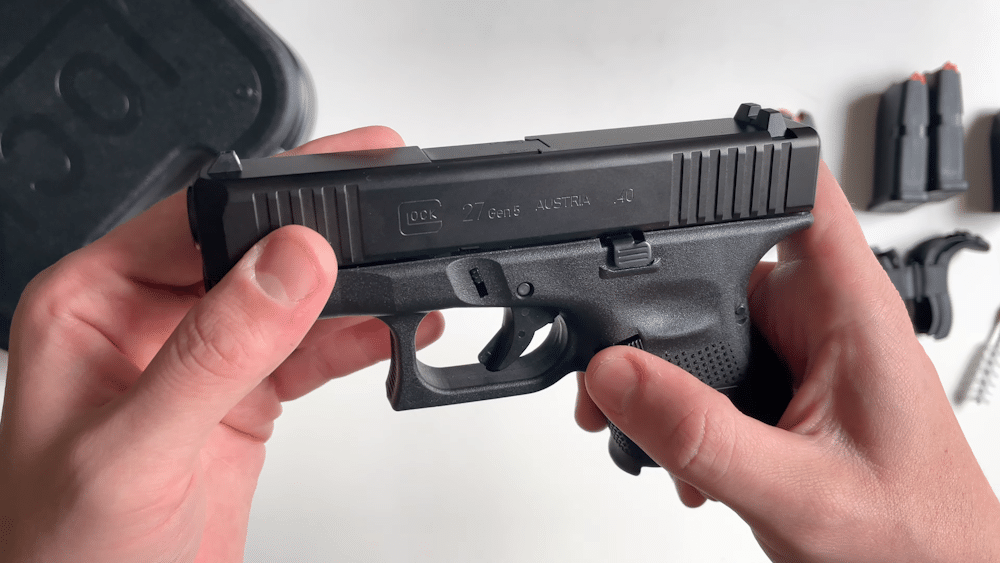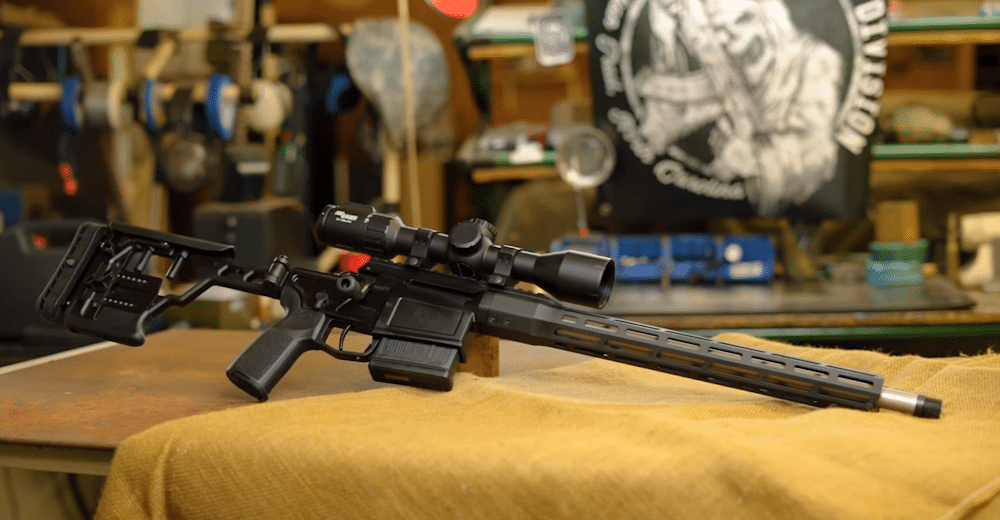What is a Picatinny rail? A Picatinny rail is a mounting system that is probably the most compatible with firearm accessories on the market today. It is also referred to as a MIL-STD 1913 rail, tactical rail or Pic rail.
We have traced its origin and development to become the standard and the most recognizable platform for mounting accessories such as foregrips, lasers, lights, scopes and infrared illuminators to firearms.
We have also provided a detailed review of its design, features, applications and performance when pitted against the other available mounting systems.
The Picatinny rail was originally used for scope mounting on rifles before it attained military standard Mil-STD-1913 in 1995.
The STANAG 4694 rail was based on the MIL-STD 1913 design but the version updated by NATO on May 8, 2009 featured a metric drawing and a different method of interface clamping. It employs the top surface instead of the 45° angles in the earlier version for accessory reference and alignment. The newer interface had greater consistency and more reliable Return to Zero capability.
Picatinny rails have a series of T-shaped elevated grooves along the entire length and uniform spacing between slots. The mounting system is made from steel, aluminum or polymer.
When mounting, you typically use screws for the rail and clamps for the accessories.
The Weaver-style rail featured slots that were oriented transversely and on flat dovetail rails. It was named after its developer William Ralph Weaver. (We have discussed a Picatinny rail vs. Weaver rail further in this article.)
During that time, each company had its own attachment system and mounting platform for specific firearm accessories. The mounting systems were available in various dimensions and configurations. This limited the range of accessories you could mount on a firearm because both had to be designed by the same manufacturer to ensure compatibility. For instance, it made it more difficult and inconvenient for the military to switch to and from night vision devices such as tactical lights and infrared lasers.
The need for a standardized mounting system that could work for all manufacturers of firearms and a wide range of accessories led to the creation of the Picatinny rail in the 1995. The platform derives its name from U.S. Army Picatinny Arsenal Trusted Source U.S. ARMY PICATINNY ARSENAL Picatinny Arsenal NJ is the Joint Center of Excellence for Guns and Ammunition, providing products and services to all branches of the U.S. military. Team Picatinny leads in the research, development, acquisition and lifecycle management of advanced conventional weapon systems and ammunition. home.army.mil where it was developed.
What is a 1913 Picatinny rail? It is another name for the Picatinny rail that refers to the MIL-STD-1913 military standard designation assigned to the rail system after its approval.
The adoption of the system by NATO and the U.S. military as a standardized system is a testament to its high compatibility with a wide range of firearm accessories. The Picatinny rail makes it easier for military, law enforcement and civilian users to switch or upgrade their firearms and accessories. Most firearms today come with pre-mounted Picatinny rail or a convenient way to mount one.
Picatinny rails are known for durability and maintaining zero because they typically feature steel or aluminum construction. The two robust materials are resistant to reasonable impact or torsion that could affect the repeatable connection of optics in a scope mounted on a firearm using a Picatinny rail.
A Picatinny rail is compatible with different scope lengths because it offers several placement options with even recoil slot spacing for your firearm accessories. The difference in spacing between a Weaver and Picatinny rail allows for finer adjustments in the latter.
A 20 MOA Picatinny rail that is canted Trusted Source NRA Women | Do You Need a Canted Rail? Whats a canted rail, and why might you want to put on on your rifle? www.nrawomen.com allows you to extend the elevation range of your scope for long-range shooting.
Considering the sheer number of modern firearms and accessories that utilize it, we have provided a step-by-step installation guide and the tools you need for Picatinny rail mounting.
Assemble the tools that are specified in the manufacturer’s instructions. This may include a wrench and screw bit fasteners. For instance, Pecawen Picatinny Rail includes an Allen wrench, 8 sets matched screws and 8 sets locking T-nuts. The lightweight rail is available with 5, 7, 9 or 11 slots.
Confirm that the surface where you will mount the rail is clean with no debris or burrs that might affect attachment.
Next, check that the rail is properly aligned with your firearm and then secure it with the provided fasteners by tightening them.
Test the Picatinny rail to ensure it remains firmly attached and stable, especially during repetitive recoil.
Lastly, mount your accessories and use the recommended procedure to secure them.
There are various mounting platforms with different attachment style for firearms such as handguns, shotguns and rifles. The platforms can employ slots or keyholes, and you may also find differences between models made by the same manufacturer.
It is important to learn the strengths, weaknesses and applications of the available mounting systems so you can choose compatible accessories that would be firmly secured when shooting.
The key difference between a Weaver and Picatinny rail is their respective dimensions, particularly the groove widths. The locking slot of a Picatinny rail is 0.206 inches wide, 0.118 inches deep and the center spacing between slots is 0.394 inches. The slot in a Weaver rail is 0.180 inches wide.
The slots also vary in their positioning in Picatinny and Weaver mounting systems. The latter may not have standardized spacing between the slot centers and the slots may be located anywhere on a Weaver-style base.
In contrast, uniform spacing is a requirement that was initially made to accommodate military optics that had two cross slots and to ensure compatibility when attaching different systems to a Picatinny rail. The slots are usually located along the rail length at regular intervals.
A Weaver mounting system also has fewer grooves (typically two-slot design) than a Picatinny rail which features slots spread along the entire rail length.
Additionally, a Picatinny rail has elevated segments at pronounced angles and slots with square bases whereas the slots in a Weaver rail have rounder bases.
So, although a Picatinny shares a similar design to the old Weaver rail, you cannot use them interchangeably.
A Picatinny rail can work with many Weaver accessories, especially earlier models, because it has a deeper design with wider slots but a Weaver rail will typically be incompatible with Picatinny accessories.
Lastly, the spacing style of a Weaver rail may be inconvenient and time-consuming for loading accessories. The rail is, therefore, more suitable for firearms with detachable magazines. Older hunting rifles and cheap entry-level options may also be available with a pre-mounted Weaver rail.
Also known as the tip off rail, this rail style has the tapered shape of a trapezoid that is similar to the tail of a dove and uses the secure dovetail joint that we often see in furniture and woodworking Trusted Source Woodworking The butt joint is the most basic woodworking joint. Commonly used when framing walls in conventional, stick-framed homes, this joint relies on mechanical fasteners to hold the two pieces of stock in place. Learn how to build a proper butt joint, and when to use it on your woodworking projects. web.faa.illinois.edu .
The rail system features two thin slots that run side by side and is available in various sizes.
3/8” dovetail is the most common size in America. It has a 45-degree groove angle and measures 12.7 mm and 3/8 inches (9.5 mm) across the top and bottom respectively.
You will mainly find 11 mm dovetail in Europe with a 60-degree groove angle and top and bottom measurements of 11 mm and 8 mm respectively.
The different angles and width sizes of dovetail rails do not typically allow you to interchange them unless you use a mount with a reversible clamp such as the one manufactured by B-Square.
Dovetail rails are popular for air guns and rimfire rifles.
The KeyMod rail was introduced on the market in 2012. It has a lighter, smoother and slimmer design compared to the size of a Picatinny rail. Keymod uses angled nuts and a keyhole profile instead of slots. The rail system also features superior barrel ventilation that prevents overheating under sustained fire.
The open-sourced KeyMod rail allows you to mount accessories wherever needed as opposed to the bulkier and heavier Picatinny rail that has slots running lengthwise.
M-LOK (Modular Lock) rails were launched in 2014 with a design that is similar to a KeyMod rails but with T-nut system instead of round tips. The difference between the two mounting platforms is that the former uses uniform elongated slots which may be more secure and flexible than keyholes.
Compared to Picatinny rails, the free licensed M-LOK is more resistant to recoil and overheating barrels. However, there are Picatinny rails such as the 5-slot Magpul M-LOK Picatinny Accessory Rail which is compatible with M-LOK slots and includes integrated lugs that mitigate recoil and impact.
This modular rail style is mostly used on the handguard of a rifle for direct attachment of accessories. Some users recommend it for a comfortable grip.
The shape and size of a Picatinny rail allows users to attach a variety of accessories and configure or swap them easily for different settings while maintaining zero. It has become the go-to system for manufacturers because of its standardization, ease of use, versatile compatibility with other rail systems, and flexible positioning of accessories on firearms.
We recommend consulting the Picatinny rail mounting instructions from the manufacturer before installation.
Apart from defining what a Picatinny rail is and how it is different from a Weaver rail, our article has provided a detailed comparison of other rail platforms and the features that make them suitable for specific applications to provide you with more options.





